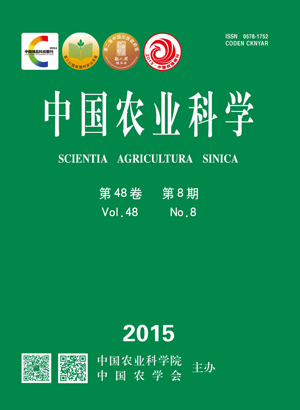-
Response of Wheat Root Characteristics and Canopy Photosynthesis to Different Irrigation Methods in Lime Concretion Black Soil
- ZHANG Xiang-qian, CAO Cheng-fu, QIAO Yu-qiang, LI Wei, CHEN Huan
-
Scientia Agricultura Sinica. 2015, 48(8):
1506-1517.
doi:10.3864/j.issn.0578-1752.2015.08.05
-
 Abstract
(
687 )
Abstract
(
687 )
 HTML
(
31 )
HTML
(
31 )
 PDF (396KB)
(
19234
)
PDF (396KB)
(
19234
)
 Save
Save
-
References |
Related Articles |
Metrics
【Objective】The aim of this experiment was to clarify the potential mechanism of the effects of different irrigation methods which was irrigated at early growth stage of wheat on root characteristics, canopy photosynthesis and yield at middle and late growth stages, and to reveal the relationship between root characteristics and canopy photosynthesis. 【Method】 The experiment was conducted in an artificial glass rainproof shed, and the designed ten irrigation treatments in this experiment were CK(adequate water was supplied at early growth stage), W120d (20 d after seedling emerged for 50 mm), W240d (40 d after seedling emerged for 50 mm), W360d (60 d after seedling emerged for 50 mm), W480d (80 d after seedling emerged for 50 mm), W5100d (100 d after seedling emerged for 50 mm), W6120d (120 d after seedling emerged for 50 mm), W720d+60d (20 d after seedling emerged for 25 mm+60 d after seedling emergency 25 mm), W840d+80d (40 d after seedling emerged for 25 mm+80 d after seedling emerged for 25 mm) and W960d+100d (60 d after seedling emerged for 25 mm+100 d after seedling emerged for 25 mm). The effects of different irrigation methods which were irrigated at wheat early growth stage on root characteristics, canopy single leaf area, chlorophyll density, photosynthetic capacity, photosynthetically active radiation, chlorophyll fluorescence parameters and yield of wheat at middle and late growth stages were studied. 【Result】 To appropriate postpone the irrigation date at wheat early growth stage could help to increase total root length, total surface area, total volume, average diameter, total root tips and total root forks, and the difference between W5100d (irrigation was carried out 100 d after seedling emergence) and CK (adequate water was supplied at early growth stage) was insignificant, but they were significantly higher than that of W120d (irrigation was carried out 20 d after seedling emergence) and W6120d (irrigation was carried out 120 d after seedling emergence). The single leaf area of 1, 2 and 3 leaves counted from the top of CK was the highest at booting and flowering stages, but the difference between CK and W5100d was not significant, and the canopy of single leaf area was not significantly affected by irrigation times under the same irrigation amount. When one time of irrigation was made at early growth stage of wheat, the canopy chlorophyll density had a change trend of initial increase and then decrease with the postponement of irrigation date, and the values of W5100d were the highest, while of W120d were the lowest. The canopy photosynthetic rate of W5100d at booting stage, flowering stage and middle of filling stage was significantly higher than that of CK, and was increased by 7.5%, 8.9% and 8.9%, respectively, but the canopy photosynthetic rate was not significantly affected by irrigation times. Under the condition of one time of irrigation, W5100d had the highest values of canopy photosynthetically active radiation at booting stage, flowering stage and middle of filling stage, and when compared to W120d and W6120d , the values were significantly increased by 18.7%, 9.7%, 11.0% and 5.7%, 4.9%, 4.3%, respectively. The chlorophyll fluorescence parameters of Fo, Fm, Fv/Fm, ΦpsII and ETR of W5100d at booting and flowering stages were the highest, and the chlorophyll fluorescence parameters were not significantly affected by irrigation times. The differences in yield and harvest index between W5100d and CK were not significant, and when compared to W120d and W6120d they were increased by 15.4%, 22.1% and 3.2%, 9.2%, respectively.【Conclusion】Too early or too late irrigation at early growth stage had adverse impact on root growth, canopy light utilization and yield formation, while the irrigation date was appropriately postponed, the root characteristics, canopy photosynthesis and yield were better than or equivalent to the treatment of adequate water supply at wheat early growth stage, and the effects of irrigation times were not obvious under the same amount of irrigation water.









